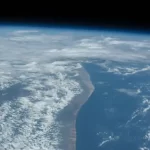While the Middle East remains in the category of reaction to international conflicts and proxy battles between the great powers. And while Europe is preparing to shiver from the upcoming cold, after the power lines coming from Russia have stopped. The region itself may, due to extreme weather changes, be a solar energy superpower.
Currently, China is leading the solar cell industry. Chinese companies account for more than two-thirds of the polysilicon industry, and 90 percent of the semiconductor wafers used to make cells. Which puts the world at its mercy in the event of confusion in the production lines. Just as a series of explosions at the Xinjiang factory in July 2020 caused global prices for polysilicon to rise by more than 50%.
Now, there is room for Middle Eastern countries to compete. It is driven by the desire to stop carbon emissions during the period agreed upon by the leaders of the countries participating in the climate conferences. The UAE has pledged $160 billion to reach net zero emissions by 2050. Saudi Arabia’s renewed commitment to 50% renewables by 2030 coincided with the signing of seven power purchase agreements for new solar power plants.
Also, there is Jordan, which has committed to provide 50% of its electricity from renewable energy sources by 2030. It benefits from the third highest solar energy potential in the world, with an average solar radiation of between 4 and 8 kWh/m². Israel, in turn, seeks to obtain 40% of its electricity from renewable energy sources by 2030, by installing between 18 and 23 gigawatts of solar panels.
away from the oil
Since the oil embargo in the 1970s during the Yom Kippur War of 1973, Western energy policy has aimed at escaping dependence on Middle Eastern oil. However, while the main oil producers in the region are a small handful of countries. By contrast, solar energy can be produced throughout the Middle East and North Africa. This allows for a multiplicity of producers, and thus, reduces the power of the few to create an entity that controls prices such as OPEC oil.
A report prepared by Gideon Bromberg, Nada Majdalani and Yana Abu Talib. They are Israelis, Palestinians and Jordanians participating in EcoPeace Middle East – an organization that works for peace through environmental cooperation – to the United States and the European Union. They do not work properly with the countries of the region in the field of solar energy, while China leads.
He says that Chinese overseas development loans now dwarf those offered by Western-backed multilateral development banks. While Chinese public lending has long favored coal-fired and hydropower projects, it has now dramatically increased subsidies for green energy.
He added: China’s investment in renewable energy sources accounted for 57% of external energy financing in 2020, up from 1% in 2019. In 2021, the China Development Bank (CDB) allocated $78 billion for renewable energy projects.
The West needs to act
The report indicates that the Chinese moves in the region exceeded the slow steps of the West by a few stages. China is involved in solar energy projects in Egypt, Morocco, Saudi Arabia, Jordan and Iran.
The China Silk Road Fund has acquired a high-profile stake in the fourth phase of the Mohammed bin Rashid Solar Park in Dubai. The Asian Infrastructure Investment Bank (AIIB) has also approved a $60 million loan to build a 500 MW plant in Oman. Power China and Iraq signed an agreement to develop up to 2 gigawatts of solar power plants.
However, clean energy supply chains are a priority for Western policymakers. In December 2021, DFC, the US export financing arm, approved debt financing of up to $500 million—the largest single debt financing transaction—for First Solar, Inc. This is to support the company’s integrated solar PV module manufacturing facility in India.
The report says: Such an initiative should be replicated in the Middle East. And it should be a major target of the G7 initiative to “build back a better world” agreed last year.
He pointed out that “similar Western loans are needed throughout the Middle East. The water-for-energy deal between Israel and Jordan signed in November 2021 should create a market for 5-7 gigawatts. The recent energy strategy of the European Commission also mentioned the possibility of importing clean energy in the future from the Middle East.”
new market fluctuations
The fundamental outlook is for China to continue to dominate solar PV module demand. About 80 gigawatts is expected this year. Equivalent to 36% of the global total.
The European Union comes in second with about 49 gigawatts (22%), with the bloc striving to promote renewable energy in order to reduce dependence on Russian fossil fuels.
In third place is the United States, with about 26 gigawatts (12%) this year, almost unchanged from last year. With expectations that supply will fail to catch up with demand, given the constraints of private policies. Especially after the US Department of Commerce opened an investigation into panel imports from Southeast Asia with allegations of tariff fraud.
Energy research firm Rystad Energy, in a recent report, says that about 17.5 gigawatts of solar energy projects in America planned for 2022 are at risk due to the Commerce Department investigation.












